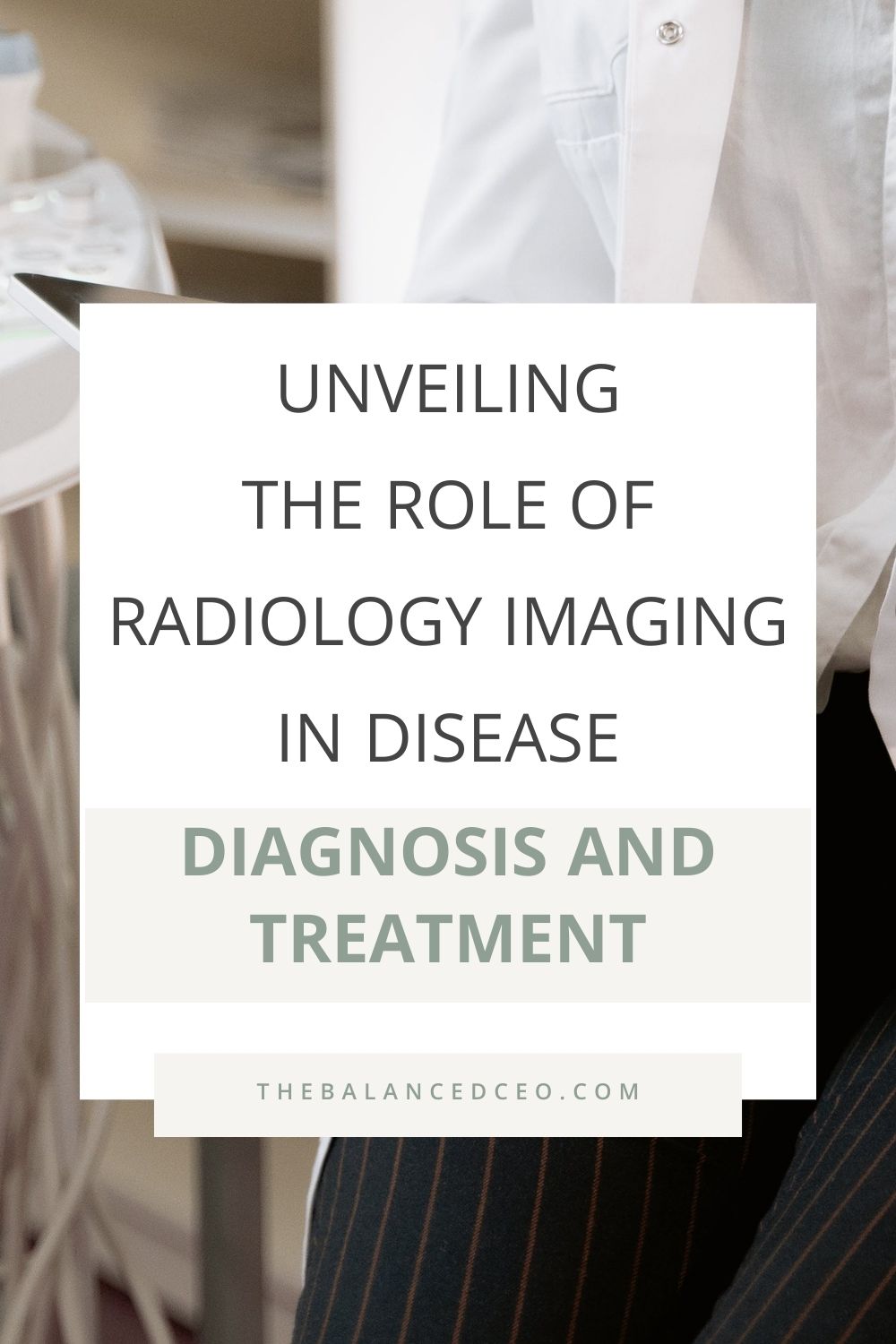This post may contain affiliate links, which means I’ll receive a commission if you purchase through my links, at no extra cost to you. Please read full disclosure for more information.

Dive into the world of medical marvels, where radiology, first unveiled in 1895, has escalated to be a linchpin in modern healthcare. With a diverse palette of imaging technologies at its disposal, radiology has etched its vital role into the fabric of medical diagnosis and treatment.
Serving as a trusty sidekick to physicians, it illuminates the path to disease identification and even prognoses. Let’s embark on a journey, exploring how radiology imaging amplifies the effectiveness of medical diagnosis and treatment.
Enhancing Medical Diagnoses through Radiology Imaging
Strap in, as we delve into one of radiology’s most impressive branches – Diagnostic Imaging. Think of it like having X-ray vision, illuminating the hidden highways and byways of our bodies. This isn’t just about pretty pictures; we’re talking radiographs, ultrasounds, and fluoroscopy. These tools grant us a front-row seat to the grand theatre of the human body, spotlighting any peculiarities or unexpected plot twists in our internal narrative.
From subtle scene changes to dramatic shifts, nothing escapes the discerning eye of diagnostic imaging. It’s particularly skilled at sniffing out those sneaky, silent types – chronic and non-communicable disorders that prefer to lurk in the shadows. The big bad wolves of health – cardiovascular disease, cancer, diabetes – they all stand revealed under the unwavering gaze of radiology imaging.
Mermaid Beach radiology on the Gold Coast is one of the many facilities that has mastered the art of diagnostic imaging. With cutting-edge technology and skilled radiologists, they specialise in detecting even the most elusive abnormalities. If you live in the area and need a reliable partner on your health journey, you can count on Mermaid Beach radiology to have your back.
Exploring the Diverse Spectrum of Diagnostic Imaging Techniques
MRI Scans
MRI scans, folks, are like the superheroes of the imaging world, flexing their magnetic muscles to create images that are as clear as crystal. And guess what? They don’t even need radiation to work their magic! Now, when it comes to the types of MRI machines, we’ve got four contenders. We’re talking about true open, closed, 3T, and wide bore machines.
And your doctor? They might just suggest an MRI scan when they need to go all Sherlock Holmes into your body. We’ve got a whole host of usual suspects that can be investigated with MRI scanning, from brain and spinal cord abnormalities, sneaky cysts and tumors, to joint injuries and breast tissue anomalies. Oh, and let’s not forget our pals, the abdominal and liver irregularities.
MRA Scans
Now, let’s chat about MRA scans, the unsung heroes of the diagnostic imaging world. Picture this: an examination that offers a high-definition sneak peek into your blood vessels like never before. That’s MRA for you! Short for Magnetic Resonance Angiogram, an MRA scan is basically an MRI scan with a knack for vascular examination.
With a medley of magnets and radio wave energy pulses in its arsenal, MRA scans can capture detailed images of blood vessels that outshine what traditional X-rays, ultrasounds, and even CT scans can produce.
Typically, MRA scans are called into action for a closer look at the legs, neck, brain, and kidneys. They’re like the detectives of the medical world, assessing the state and flow of blood in these areas, sniffing out calcium deposits and clots, and catching any potential culprits causing blockages. With MRA scans, nothing can hide – they’re the perfect accomplice for doctors in their quest to keep blockages at bay!
CT Scan
Stepping into the ring, we have the CT scan, also fondly known as the CAT scan. This heavyweight champ of the diagnostic imaging world is like the all-seeing eye, capturing X-ray images from all angles and perspectives. Then, like a puzzle master, it hands the pieces over to computer software that whips up a picture-perfect cross-section of your body’s highways and byways – the blood arteries and tissues.
CT scans aren’t your everyday X-rays. They’re like X-rays on steroids, dishing out more detailed insights into the body’s interior. What’s more, they’re safety-conscious, using only low doses of radiation. Radiologists call on CT scans to carry out their detective work, evaluating injuries and trauma.
If a doctor’s Spidey-sense starts tingling at symptoms like pain or nausea, they might recommend a CT scan. And when it comes to keeping tabs on the pesky villains of disease progression, like cancer, CT scans are a force to be reckoned with.
Ultrasound
Now, let’s roll out the red carpet for Ultrasound imaging, the unsung hero of the imaging world. Imagine it as a kind of sonic superhero, using high-frequency sound waves instead of radiation to snap pictures of what’s going on inside. And guess what? These superheroes are perfect for expectant moms, offering a safe look at the little bundle of joy without the worry of radiation. But don’t be fooled – their powers extend far beyond monitoring pregnancies.
They’re also ace at revealing the nitty-gritty of our internal organs – structure, movement, you name it! And did we mention their exceptional talent for mapping out the hustle and bustle of blood flow in our vessels? Plus, in the hands of a skilled doctor, ultrasound imaging can guide needles flawlessly during procedures, making it an invaluable sidekick in both diagnosis and treatment!
X-Ray: The Quick and Cost-Effective Detective
Let’s give a big round of applause for the X-Ray, the rockstar of the imaging lineup. With its super-speed and budget-friendly nature, it’s no wonder this high-energy hero is the go-to guy in diagnostic imaging. Here’s how it works – the X-ray shoots a beam of energy that sails right through the body. But hang on – not all parts of us are easy to pass through. Those hard-as-nails bones and dense tissues? They send the energy packing, which is how we get to see them in the image. Picture them as the stars of the show, with everything else fading into the background.
Whether it’s spotting a dense mass hiding out in your chest or abdomen or a sneaky bone injury trying to go unnoticed, the X-ray has got it covered. But that’s not all – it’s also got a secret weapon up its sleeve, the Mammogram. This X-ray specialist is a whizz at detecting breast irregularities, acting like an early warning system for breast cancer. Mammography can spot those tiny lumps or masses that physical exams might miss, proving that sometimes, the best things do come in small packages!





Leave a Reply